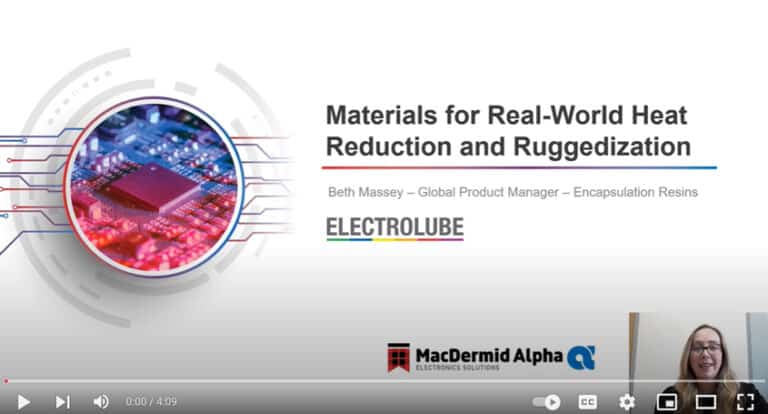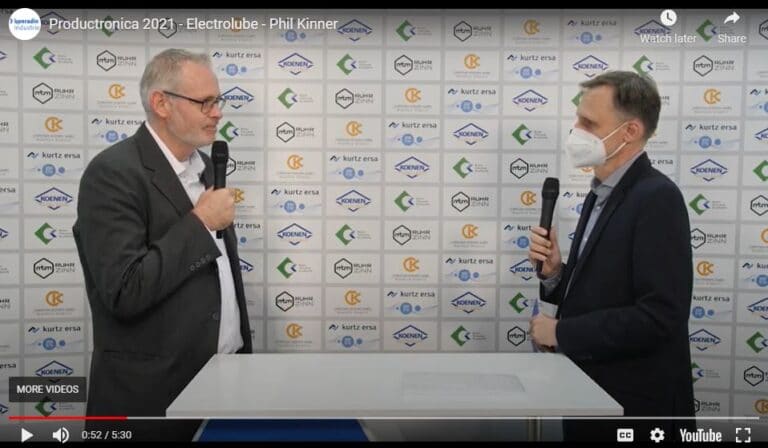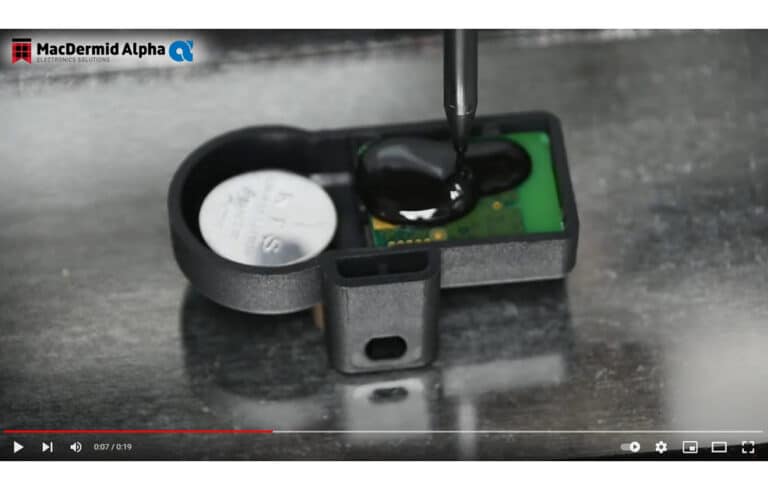Estimated Read time: 1450 words 6 mins

Our UK R&D team recently purchased a new piece of equipment in order to help with both the development of new products, as well as helping customers find the solutions to their coating, resin or thermal management problems. Espec is one of the leading manufacturers of Thermal Shock Chambers, we spoke to our lab technicians to discover how they thought the Thermal Shock Chamber helps us with the development of new materials and customer enquiries:
A Thermal Shock Chamber does what it says on the tin – it cycles rapidly from low temperatures to high temperatures in order to ‘thermally shock’ the item within the chamber; our machine is capable of a rate of change of around 40°C per minute and can operate from around -65°C to +200°C. The hot and cold cycles make the test subject expand and contract rapidly. Due to the variety of thermal coefficients of expansion of the materials used in the construction of a printed circuit board (PCB) this places significant stress on the test substrate. If the item is coated with a this can often crack due the accelerated change – this is Thermal Shock; when a material just can’t catch up to the rate of the environmental temperature change surrounding it. Other complications can also result from this kind of extreme temperature change, such as a loss of adhesion.
1. We Respond to Enquiries Faster
Indeed, most chemical protection manufacturers don’t have this kind of machine at their disposal, and need to first send their products off to a third party test house before they understand the capabilities of their products. ‘If we have a specific technical enquiry from a customer who wants to know whether or not something will meet a specific number of cycles, or a specific range, then we can run it for them.’
‘So I guess the first benefit is that we’re really responsive, we had a recent enquiry where the customer was looking at a -40°C to +160°C temperature range for a product and had 3 weeks to make a decision. We’d never tested the product to that level with the Thermal Shock Chamber before, but we managed to turn the testing around in just 2 weeks giving the customer a whole week to evaluate the data!’
Two things are certain in this business; the amount of required test data will keep increasing, and that customers will always have different, and even unique, requirements. ‘So the more equipment we have, the more confident we can be in our products and the better service we can provide to our customers.’
‘We can also have more belief in our own products because we’ve done the testing ourselves.’ Seeing is believing. The ability to inspect the assemblies at frequent intervals provides the formulator with an enhanced understanding of the failure mechanisms and can provide more immediate feedback. This enables the formulator to adjust formulations more quickly should the data be going in the wrong direction. In addition, we as the manufacturer are in control of the timescales since we are not reliant on somebody else’s scheduling. All of this means that we can be more proactive and more responsive to our customer’s needs.
2. We Develop Better Products
We’re not only performing testing when one of our customers specifically requires it, we’re also using the Thermal Shock Chamber in our own product development, often as a comparative benchmarking tool. We might test 3 products which all fail, however there will be one which performs slightly better than the other two. The better product would then be used as a starting point, and the product development will continue, until it can withstand the environment that we need it to.

‘The development process is very tactile, and so being able to see it with your own eyes makes it easier to understand what’s going on, Thermal Shock is becoming more and more of an issue for automotive customers, especially as they transition from a solvent-based materials to VOC-free alternatives. Given that most of the products that we’re developing are VOC-free, and Thermal Shock is one of the main challenges to this technology, it naturally makes sense to invest in the equipment, to help us reduce the time to market of better materials.’
We’ve developed an internal testing method which we’re currently working on, which means that eventually we will know how all of our Coatings perform under certain conditions.’
3. We’re Improving Testing Standards
You may have already seen some of what Phil Kinner (Global technical director – Coatings Division) has been working on since our acquisition of the Thermal Shock Chamber. The series of papers entitled, ‘IPC-CC-830B vs. the Real World’, written by Phil and Carolyn, question today’s outdated testing standards, and proposes sequential testing on a model of a PCB as a better alternative. Since its release, their papers have enjoyed worldwide interest, as have many of the seminars and presentations on outdated testing methods and certification that Phil has spoken in.
Industry testing methods at present are non-sequential, meaning that each test is carried out separately and independently from one another; ‘it gives us an artificial sense of confidence,’ explained Carolyn.
Automotive component manufacturers, for instance, would need their PCB board to withstand a variety of environments all at once, and therefore a variety of tests: thermal cycling, as well as a salt-mist test due to the amount of salt on the roads, moisture and insulation resistance tests, thermal ageing tests – the list goes on. These are great tests – but they only provide part of the real-life data if they’re conducted separately from each other, as the PCB in real-life would have to perform under all of those environments at once.
However, sequential testing, on the other hand, can provide a more accurate picture of how a PCB will operate in real-life. Instead of using 5 separate test conditions to mimic the life of the PCB, you’re subjecting your test coupons to the entire environment in order to understand whether the layer of protection can last if you keep attacking it with different environments. These internal test specifications are designed to be a ‘worst case scenario’; therefore sequential testing starts off with the hardest test first – the Thermal Shock, and works its way through corrosive gas and powered salt-mist testing followed by a long exposure to elevated temperature, humidity and voltage, ‘so we can see what the consecutive corrosive soup does to the long-term performance,’ Carolyn explained, continuing, ‘In our testing to date we have seen that the coatings which can withstand the Thermal Shock environments significantly outperform the materials that have a tendency to crack.’
‘Our commitment is to developing better products that really push the limits and really perform in very harsh environments, and so we’ve dreamed up all sorts of weird and wacky tests to run,’ she smiled, ‘It’s all in the name of improving our products and understanding what the product limits are.’
‘These sequential tests will ultimately be published as a test report,’ said Carolyn, ‘kind of like a companion to the Technical Data Sheet,’ as she described a possible 20 page test report, ‘so customers can take a look and see which Coatings have already been tested against – and hopefully they’ll save themselves some work and believe our data!’










